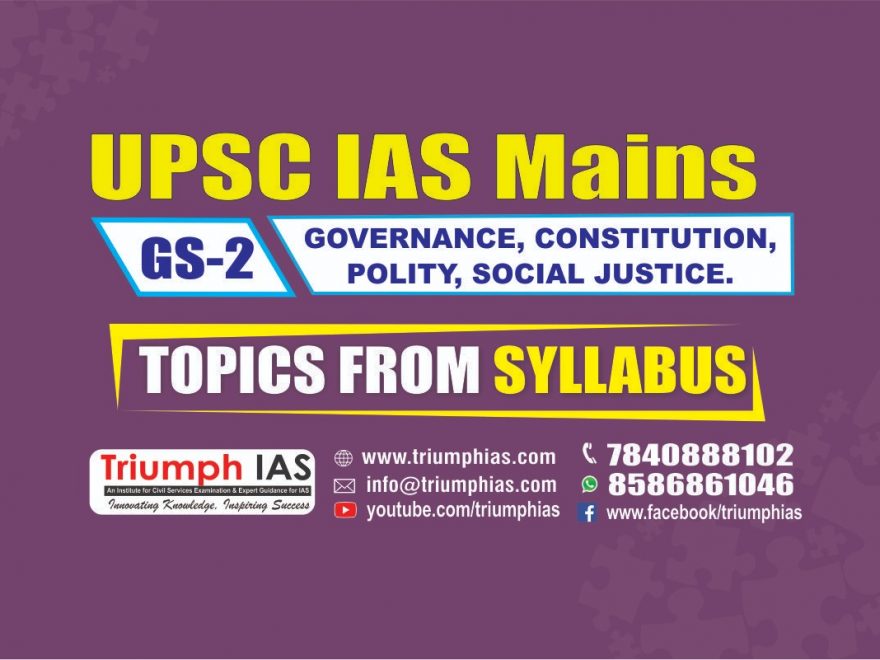Anti-torture law
Relevance: Mains: G.S paper II: Governance: Important aspects of governance, transparency and accountability
Context:
• The alleged torture of a father-son duo in Tamil Nadu has once again given rise to the demand for a separate law against torture.
• It is therefore essential to examine whether the existing law is inadequate to deter incidents of custodial torture.
Torture definition:

• Torture is not defined in the Indian Penal Code, but the definitions of ‘hurt’ and ‘grievous hurt’ are clearly laid down.
• Indian courts have included psychic torture, environmental coercion, tiring interrogative prolixity, and overbearing and intimidatory methods, among others, in the ambit of torture.
• Voluntarily causing hurt and grievous hurt to extort confession are also provided in the Code with enhanced punishment.
• Under the Code of Criminal Procedure, a judicial magistrate inquires into every custodial death.
Liability:
• The National Human Rights Commission has laid down specific guidelines for conducting autopsy under the eyes of the camera.
• The Supreme Court judgment in DK Basu v. State of West Bengal was a turning point in the evolving jurisprudence on custodial torture.
• The Court’s decision in Nilabati Behera v. State of Orissa made sure that the state could no longer escape liability in public law and had to be compelled to pay compensation.
• Similarly, the Court has held in many cases that policemen found guilty of custodial death should be given the death penalty.
• Therefore, there is neither a dearth of precedents nor any deficiency in the existing law.
Vague, harsh and retributive:
• However, a fresh draft of the Prevention of Torture Bill was released in 2017 for seeking suggestions from various stakeholders.
• The Bill was not only vague but also very harsh for the police to discharge its responsibilities without fear of prosecution and persecution.
• It was inconsistent with the existing provisions of law.
• It included ‘severe or prolonged pain or suffering’ as a form of torture but that was left undefined.
• The proposed quantum of punishment was too harsh.
• Though the 262nd Law Commission Report recommended that the death penalty be abolished except in cases of ‘terrorism-related offences’, the Bill provided for the death penalty for custodial deaths.
• In the Bill, the proposed registration of every complaint of torture as an FIR and blanket denial of anticipatory bail to an accused public servant was not reasonable.
• The bail can be refused in appropriate cases, but excluding an investigating officer from availing such an opportunity shall be no less than putting him on the highest pedestal of mistrust.
• Overall, the proposed Bill was not a reformative one. It was vague, harsh and retributive in nature.
CAT:
• In 2017, the Central government admitted in the SC that it was considering the 273rd Report of the Law Commission that recommended ratification of the U.N. Convention against Torture and other Cruel, Inhumane or Degrading Treatment (CAT).
• CAT was signed by India, but is yet to be ratified.
• However, except for minor discrepancies, the prevalent law in India is adequate and well in tune with the provisions of CAT.
Root cause of the problem:
• Retired Supreme Court Justice Deepak Gupta said that we first need to implement the law as we have it.
• “The investigations, the prosecutions are not fair; these must be rectified first,” he said.
• He exhorted that the police need to be trained better. The temptation to use third-degree methods must be replaced with scientific skills.
Conclusion:
• Thus, the need of the hour is to strike at the root cause of the problem and implement recommendations of various commissions to bring in necessary reforms.
For more such notes, Articles, News & Views Join our Telegram Channel.
Click the link below to see the details about the UPSC –Civils courses offered by Triumph IAS. https://triumphias.com/pages-all-courses.php

